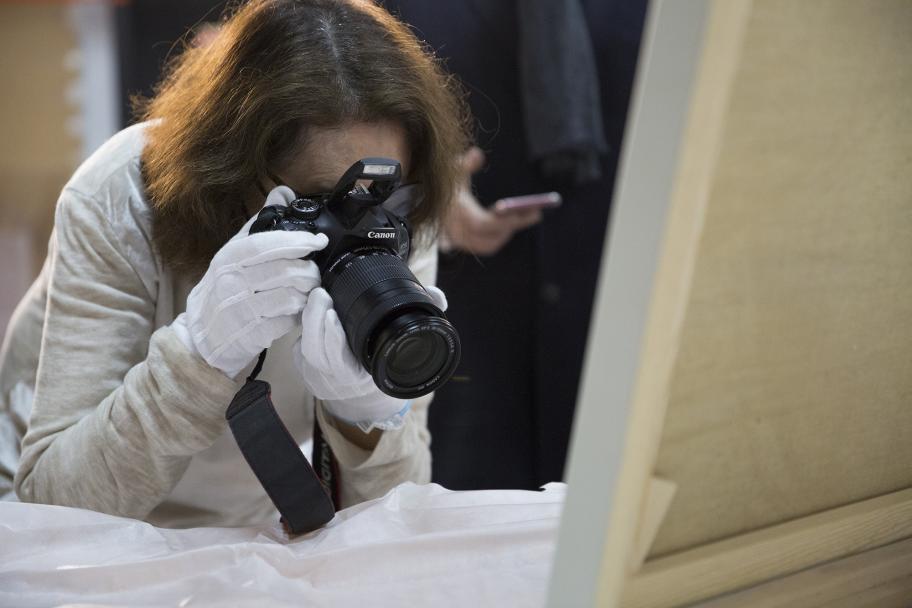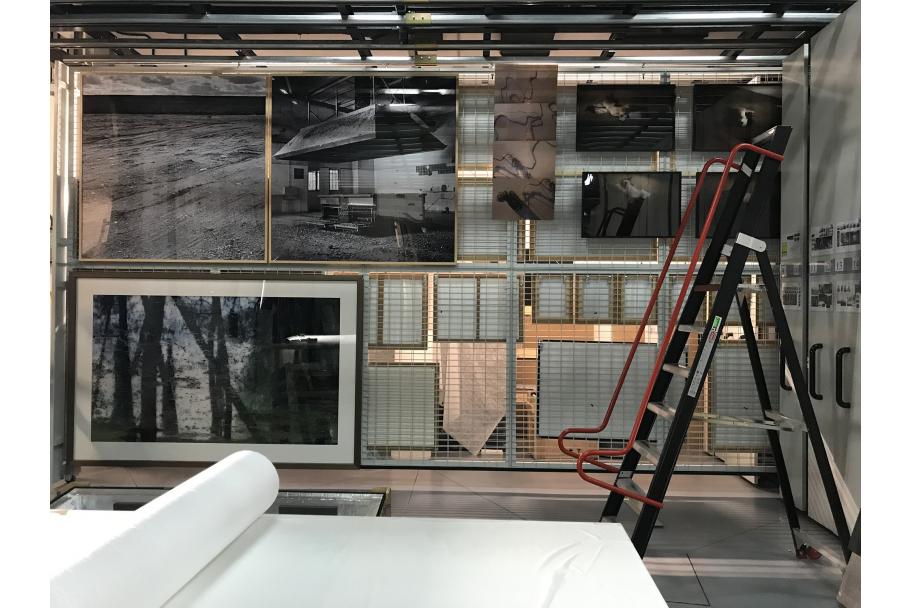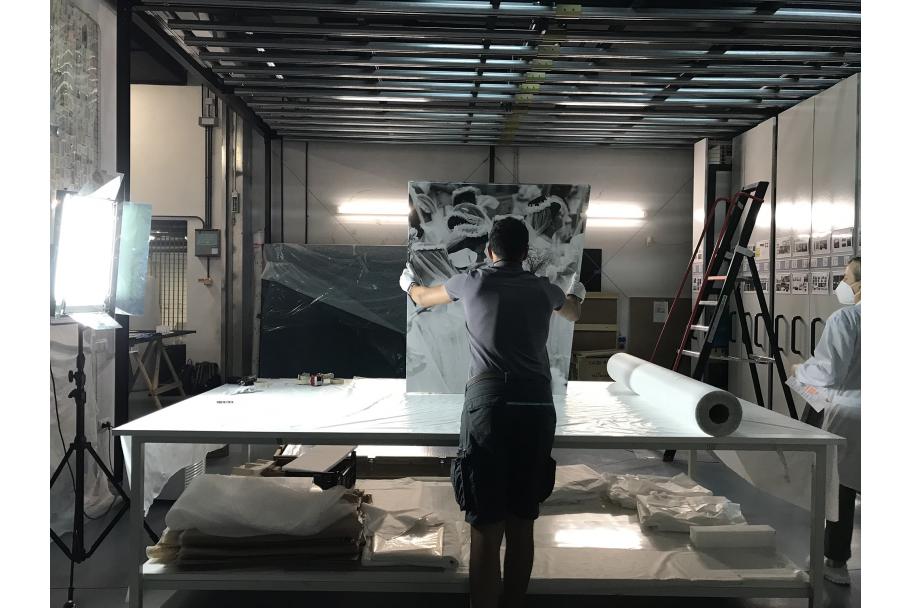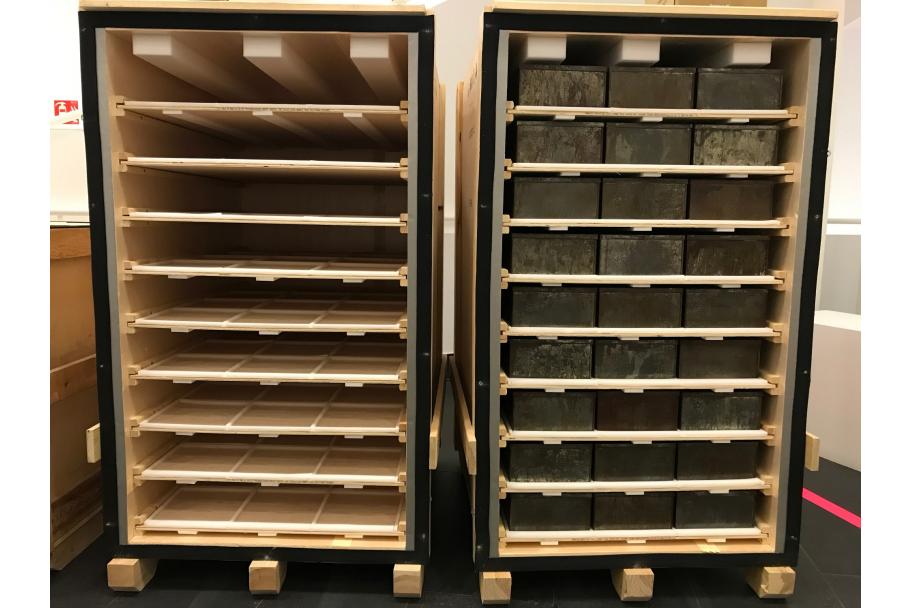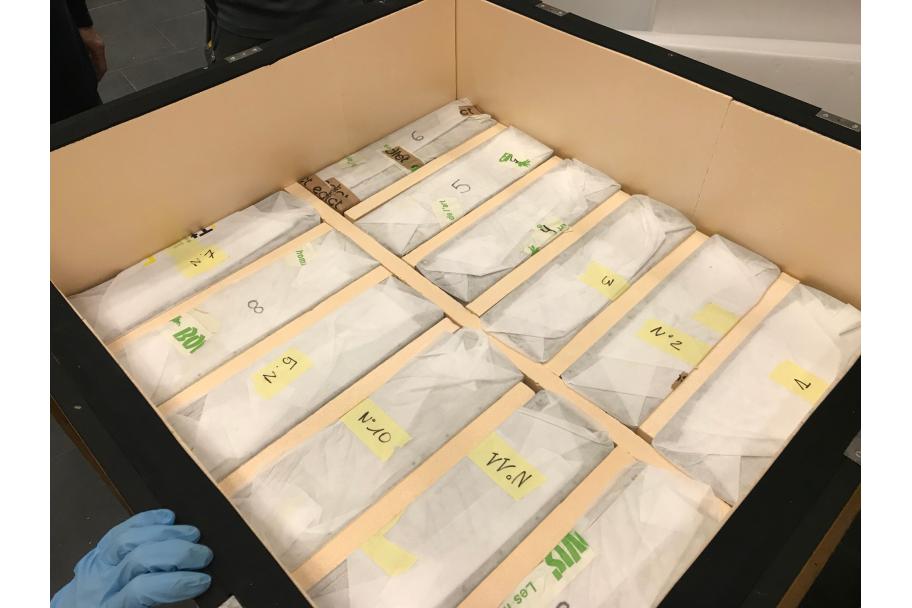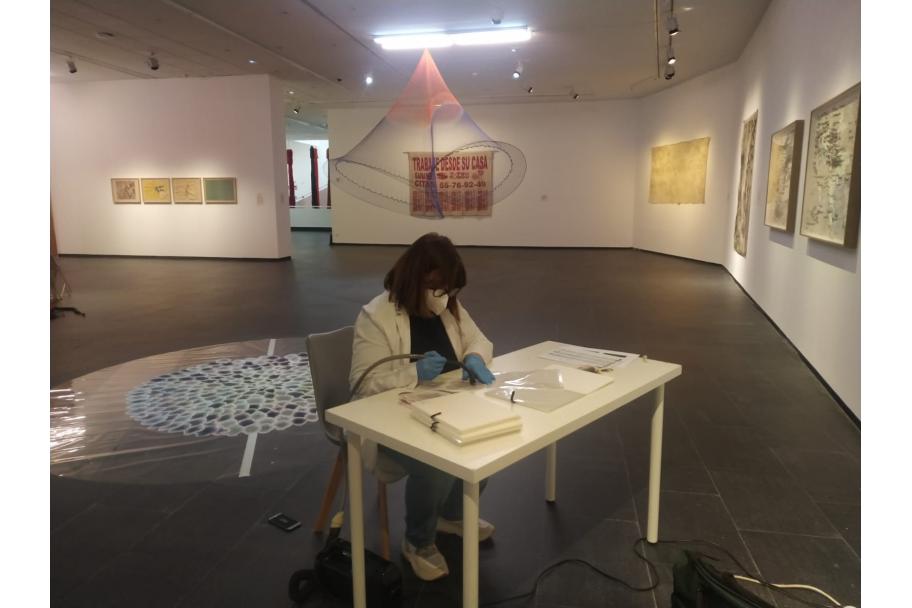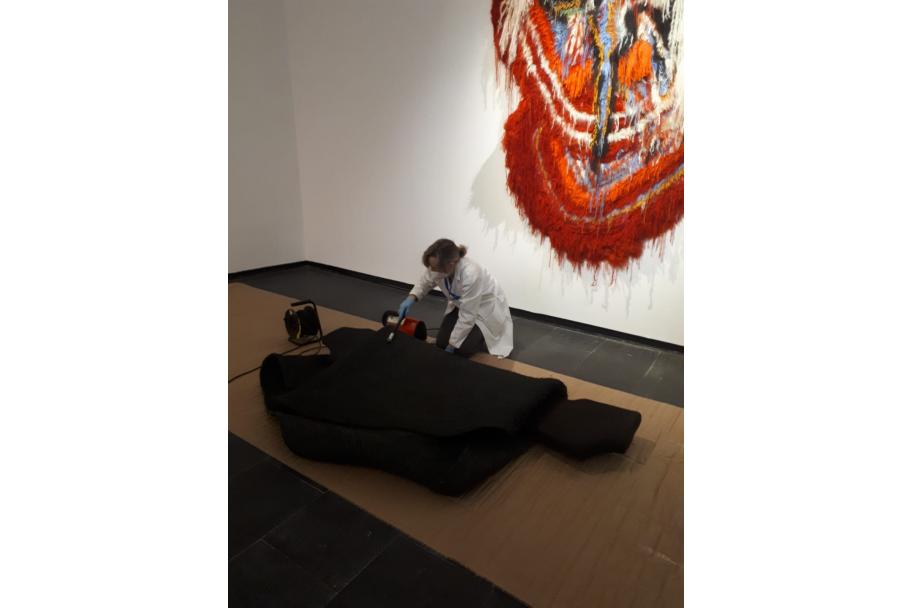CONSERVATION
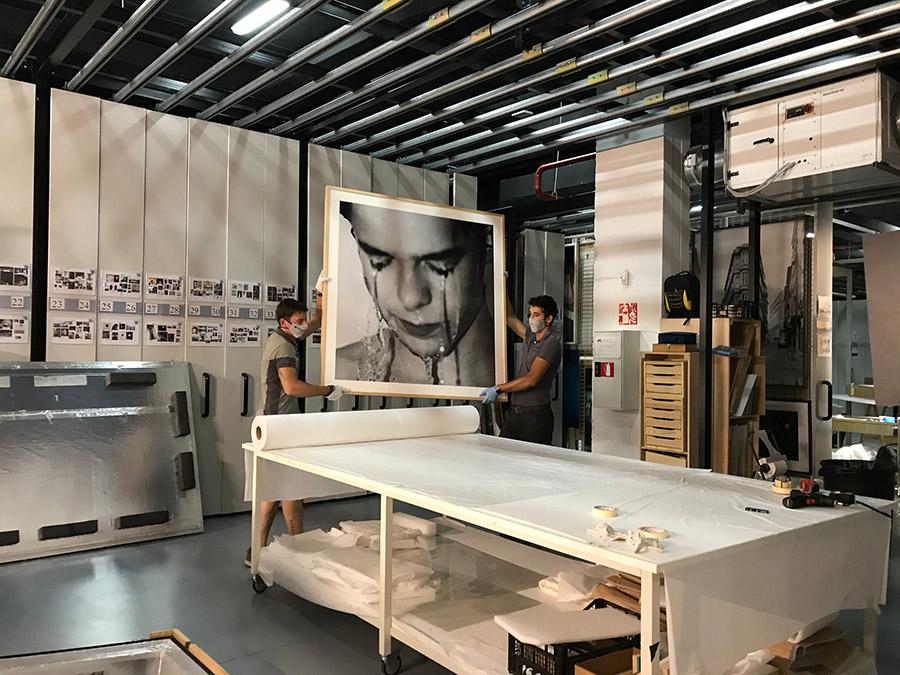
A collection is like a living organism, where each part only functions in close coordination with the others. Therefore, the preventive conservation of the works of art that comprise it – integrated into the museum’s planning strategy starting with its very architecture – is carried out on different fronts: the acquisitions policy; the rationalisation and management of the storage spaces, including their sectorisation, climate control, security, good accessibility and equipment of furniture and materials; registration and documentation of the pieces; regular monitoring of the pieces and restoration plans.
A well-preserved and documented collection is a collection that is more accessible to everyone via exhibitions, educational programmes, communications, loans to other institutions and research. But also, it is these requests for loans or availability of pieces that, thanks to feedback gathered, generate the need for new actions of conservation. That is why we believe it is essential to explain publicly, in this section of our website, some of the restoration work being carried out on pieces from the CA2M Collection and the ARCO Foundation Collection.
